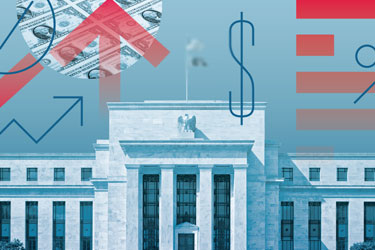Uncertainty and Market Forecasts on Oil Price Trends
Oil Prices in Narrow Range and Breakout Approaching
Over the past year, oil prices have been in a narrow range, with bearish and bearish factors largely canceling each other out. However, analysts at Bank of America point out that the market is now approaching a key breakout point. The only question is whether this breakout is bearish or bullish.
Bank of America's analysis is based on a series of technical indicators that show that oil prices have been under increasing pressure for the past year or so. They liken the oil trade during this time to a tight spring that will release its energy sooner or later, and Bank of America believes that the moment of release is imminent.
The impact of practical factors on oil prices
From a practical rather than a purely technical perspective, further OPEC+ production cuts are unlikely. The organization has made it clear on several occasions that it will only consider production cuts if oil prices are much higher than current levels. Currently, oil prices are in a downward trend, mainly because the war premium from the Middle East conflict is shrinking, while economic data has also reinforced expectations of bearish demand in Asia. Currently, the price of Brent crude has fallen below $80 per barrel.

Differences between long-term forecasts and reality
Rystad Energy's recent report shows that global recoverable reserves are lower than the levels presented in official reports. This sounds like good news for oil, but it is not. This is because this abstract nature of total reserves does not directly correlate with day-to-day output and demand trends. The Energy Research Institute calculates the total at 1.5 trillion barrels, a decrease of about 52 billion barrels compared to last year's calculations.Rystad attributes this drop to one year of production since 2023 as well as a downward adjustment in resources.
On this basis, Rystad forecasts that oil production will peak at around 120 million barrels per day in 2035, before falling to 85 million barrels per day by 2050. However, this is a “high case” scenario that assumes oil demand is as strong as it is today, which is not Rystad's own preferred scenario. The company prefers a scenario where the electrification of transportation leads to a reduction in oil demand, as existing reserves cannot support higher demand.
Dominant factors for oil prices in the short term
However, it should be clear that all of these are long-term forecasts, and such forecasts have a reputation for being inaccurate. In the short term, oil prices will most likely continue to be influenced by Asian demand and the conflict in the Middle East. As for OPEC and its decision to cut production, it's safe to say that it's unlikely to make any substantial moves to cut production until the price of Brent crude is near or even above $90.
In fact, analysts at Bank of America have taken this scenario into account. They say that if Brent crude can break through $89 a barrel, then by the end of this year, oil prices could rise to $105 a barrel. But for that to happen, it may require a significant escalation in the Middle East or a significant drop in U.S. shale oil production.
MORE FROM WIRED

- Australian Fed's Considerations and International Comparisons

- Gucci's First-Half Sales Plunge Nearly 20% as Kering's Earnings Hit Red Lights

- Changes In The ETF Market: Rising Fees Raise Investor Concerns
- Sep,02,2024

- The Impact of the U.S. Election on the Consumer Market and Retailers' Responses
- Aug,28,2024

- Market Jitters: Nikkei Plunges Amid Global Economic Concerns
- Aug,14,2024

- The Impact of the Fed's Successive Interest Rate Hikes on Global Financial Markets
- Aug,07,2024

- French Election "Surprise" Shocks Markets: Euro, Gold Price Volatility and Investment Strategy Adjustments
- Jul,31,2024